How Long Do EV Batteries Last?
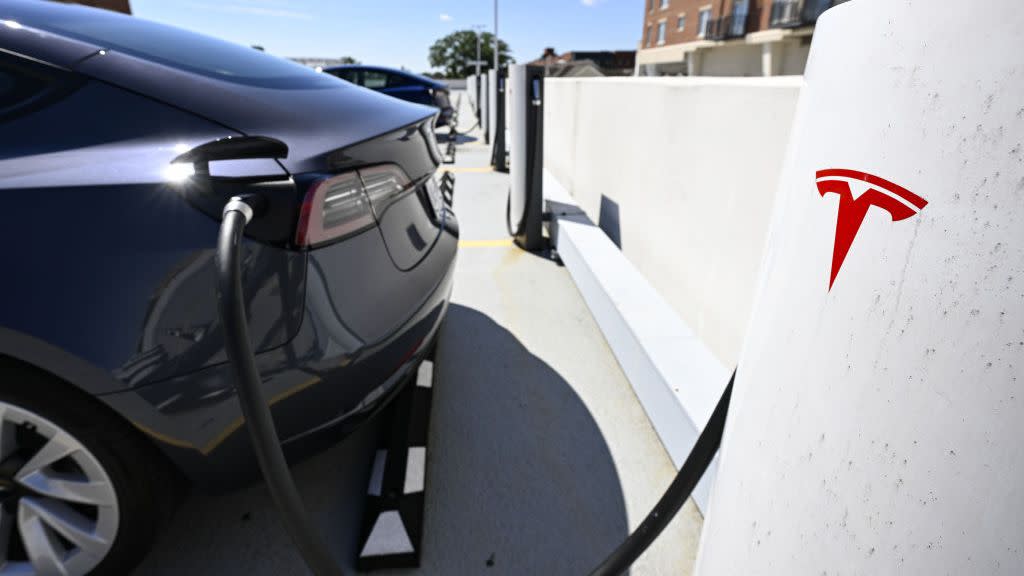
If you are contemplating buying your first electric vehicle, you may be wondering how long you can expect the battery to last and how much it will cost to replace.
We’ve been conditioned to ask these questions by our experience with other battery-powered consumer goods. The batteries in our cell phones, laptops and cordless power tools all seem to degrade long before the rest of the device, and the prohibitive cost of replacing the battery encourages us to opt instead for replacing the device entirely.
But a car is the second largest purchase most Americans will ever make, after the homes they live in, making frequent upgrades infeasible. And no one wants to be locked into a years-long loan on an asset that may lose a significant portion of its functionality as soon as–or before–it’s paid off. Unlike cell phones, cars are also expected to retain some value after their first owner moves on, and to live for decades with second, third or fourth owners.
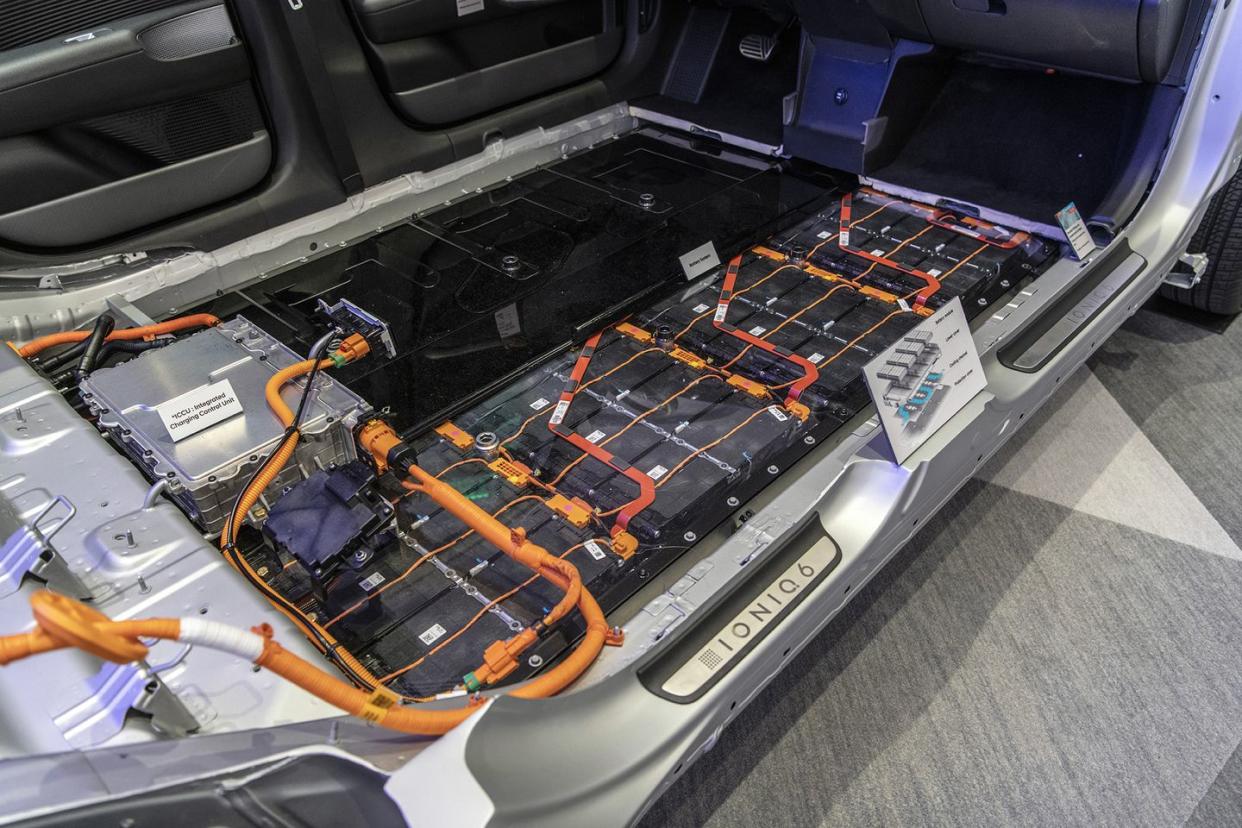
The good news for prospective EV buyers is threefold. First, in contrast with most consumer electronics makers, automakers have a vested interest in ensuring battery life. The average EV battery should outlast not just its warranty but also the rest of the car. Second, there is a lot you can do as an EV owner to protect the health of your battery. Third, the resilience of a well cared-for lithium battery gives you real options after your warranty runs out.
Although EVs are still relatively new and the battery repair and resale markets are still fledgling, you can bet that the surge in EVs and EV mandates will feed a significant servicing and recycling economy. That means falling battery prices, cost-effective repair alternatives, and your ability to recoup some resale value after your years of good battery hygiene.
EV Battery Warranties and Durability
EVs sold in the United States typically come with battery warranties that cover the first eight years or 100,000 miles, whichever comes first. The fine print varies, but generally for the covered time period, the warranty guarantees retention of at least 70 percent of original battery capacity.
Automakers have instituted these requirements even though, contrary to popular misinformation (see here, here, here and here), EV battery durability warranties aren’t yet mandated by either federal or California law—the EPA’s battery durability rule isn’t quite final and won’t apply to EVs until model year 2027, and California’s new Advanced Clean Cars II regulations instituting an eight-year/100,000-mile warranty minimum (similar to the state’s long-existing 10-year/150,000 battery warranty requirement for hybrids) start at model year 2026.
To put all this into perspective, the standard powertrain warranty on a new internal-combustion engine (ICE) vehicle–covering all the vital components that get the wheels turning, from the engine and transmission to the driveshaft and differentials–is only about five years or 60,000 miles.
Considering the battery represents 30 to 40 percent of the production cost of an EV, you can be sure manufacturers are careful to design batteries to last at least that long.
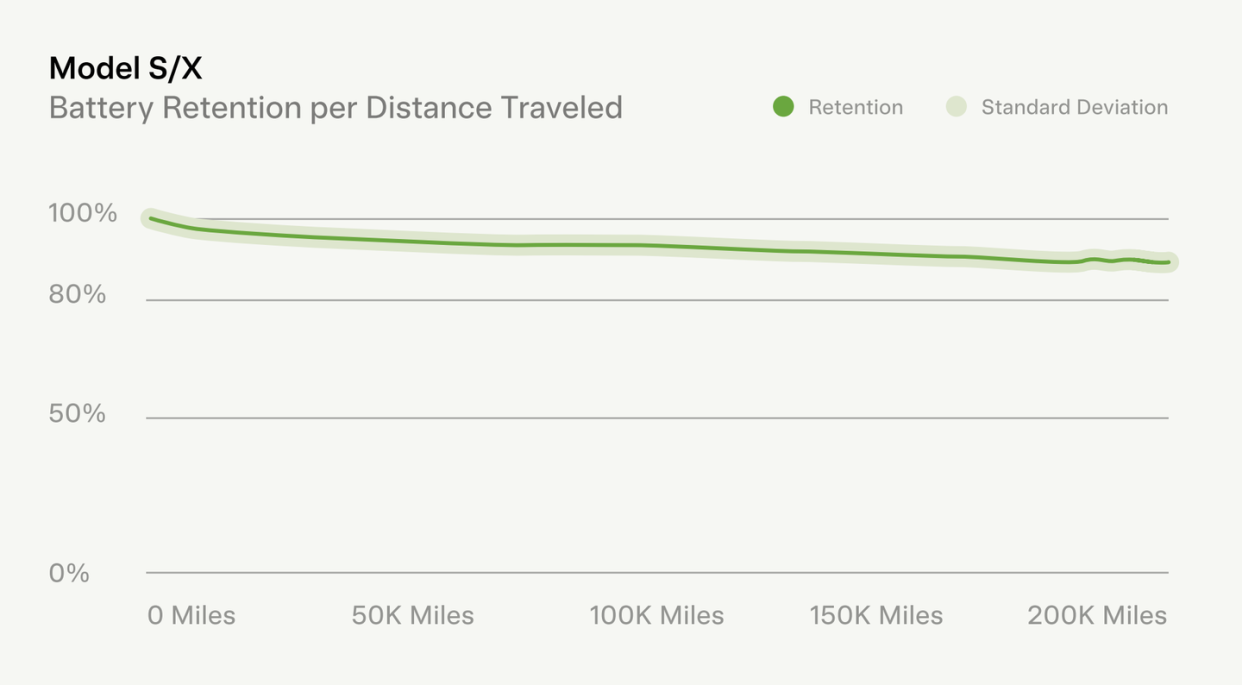
Mainstream EVs have only been around for a decade or so, and only time will tell what the durability curve looks like in 20 years, but all signs point to EV batteries lasting at least as long as internal-combustion engines and transmissions under normal use conditions.
According to a widely cited Recurrent study published earlier this year, most EVs experience a five- to 10-percent loss in capacity in their first 40,000 miles, then level off and maintain around 80 to 90 percent of their original capacity to 100,000 miles and beyond.
While relatively few EVs have been around long enough to hit 200,000 miles, Tesla’s 2022 Impact Report touted an average retention of 88 percent battery capacity at that milestone. Some individuals with particularly excessive driving habits, as in 74,000 miles a year or more, have reported as little as 20 percent degradation on packs with over 350,000 miles on them.
EV Battery Care
The second piece of good news is that it shouldn't be hard for the average driver to implement smart battery practices to significantly extend the pack's lifespan. In particular, through intelligent temperature and state-of-charge (SoC) management and judicious use of high-powered fast-charging, EV owners should be able to keep their batteries going for decades.

To protect the battery life of their EVs, owners will find that it’s worth understanding the basic science behind battery management, and the big assist that comes from smart technologies that are built into these cars. Technologies that should continue to improve with time.
Temperature Control
Take temperature control. As a general rule, lithium-ion batteries, the most common type in EVs and consumer electronics, perform best and last longest when kept away from temperature extremes. That’s roughly within the range tolerable to humans, about 50 to 110 degrees Fahrenheit.
You may have noticed that your phone won’t always charge in a hot environment like on a car dashboard, or that it may die unexpectedly when low on charge on a very cold day. In addition to introducing unreliability, these temperature extremes can cause physical damage to the molecular structure of the battery, permanently reducing its capacity and life expectancy. The same is true for the batteries in EVs.
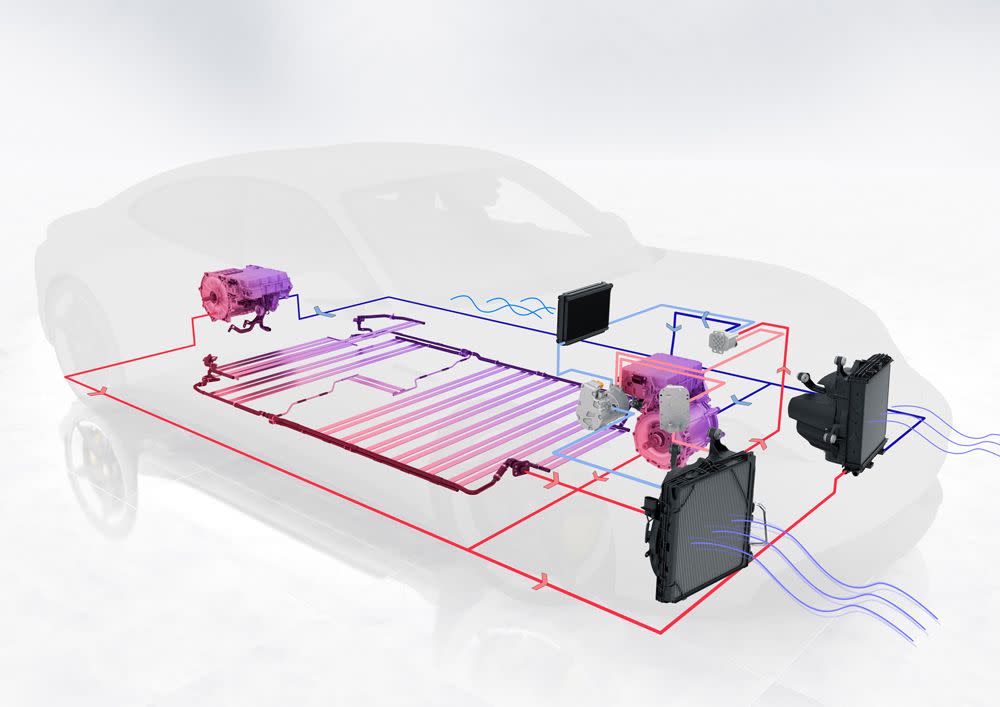
To avoid the temperature problems that plague phones, most EVs have systems to keep their batteries at optimal temperature when necessary. Coolant lines connecting the battery to the radiator and heaters regulate the battery’s temperature despite extreme internal or external variables.
This allows the battery to shed the heat it generates when quickly discharging (for example, through hard acceleration) or charging (like at a DC fast-charging station). Walk by any DCFC station, and you’ll likely hear the vehicle fans whirring furiously to cool the battery.
Similarly, most EVs work to keep the battery warm on cold days. Because letting the battery drop below freezing temperatures can also damage its internal structure, an EV is usually designed to use some of the energy from the battery (or from the wall if it's plugged in) to keep the battery at a safe temperature. This is the principal cause of cold weather "vampire drain," a term used to capture an EV’s loss of range while parked.
That loss can be as high as 10 percent a day in extremely cold temperatures and is another good reason to keep your EV plugged in, especially if you are going to leave it for days at a time. Early EV enthusiasts may recall the battery failures of the first-generation Nissan Leaf were largely caused by its complete lack of active temperature management technology, a costly mistake unlikely to be repeated by other EV manufacturers.
State of Charge
Owners can also preserve battery life by monitoring state of charge, a term that refers to the amount of energy stored in a battery relative to its overall capacity. Here, too, the key is to avoid extremes. As a general rule, batteries do not like being either 100-percent full or totally empty, as both states can damage the molecular structure of the battery much like extreme heat or cold. The main reason that the batteries in our consumer electronics tend to die so quickly is they are typically charged to 100 percent (and left plugged in) and then run down to nearly 0 daily.
In contrast, avoiding damage to your EV battery by maintaining a healthy SoC is pretty easy, since we don’t need to work our vehicles nearly as hard as our handheld electronics on a regular basis. A typical U.S. driver travels only around 40 miles per day, a very small fraction of the 200 to 400 mile range seen on most EVs. This means that with normal use and daily charging, a battery is highly unlikely to see very low SoCs.
At the other end of the SoC spectrum, EVs come with software settings that can be used to keep the battery from pointlessly overcharging. Most manufacturers recommend setting the system to stop charging at 80 percent unless that extra capacity is required for a long trip.
In fact, some manufacturers build some safety margin into the battery management system itself, creating a "usable" capacity that is actually 5 to 10 percent less than the real total capacity of the battery, and using a software lock that prevents the battery from fully charging or discharging. In this way, the battery is kept in the safest, least damaging range of operation. (This is the same principle behind Apple’s recent rollout of “Optimized Battery Charging,” a feature that stops your iPhone from fully charging until just before you are expected to unplug, minimizing the amount of time the battery spends at 100 percent SoC.)
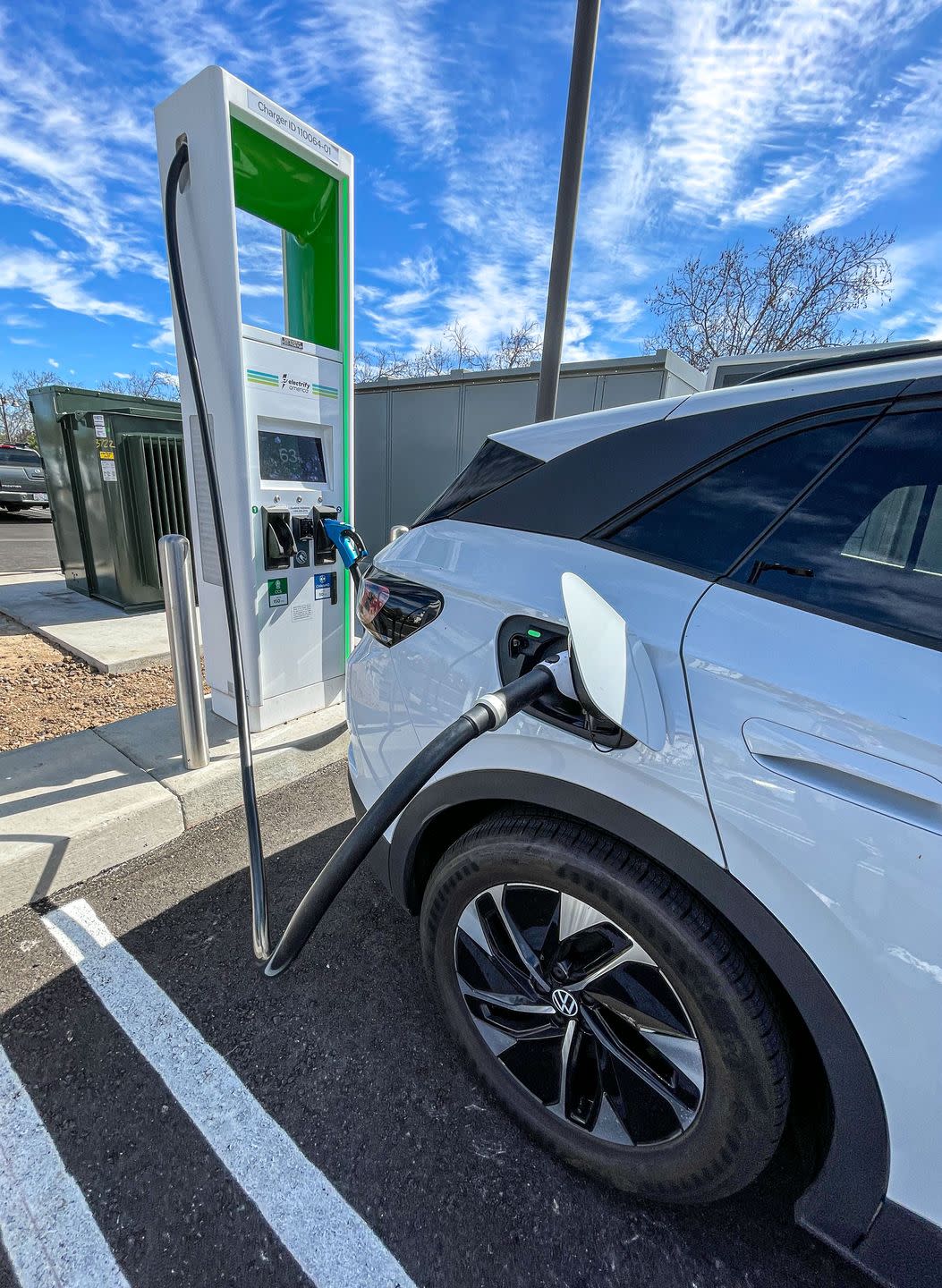
Charging Speed
A third way owners can preserve their EV batteries is to limit the speed at which they regularly charge. Very high-speed fast charging may be convenient but can cause a phenomenon called ion plating on the anode. That’s bad: lithium ions are supposed to migrate into the anode's graphite layers, not accumulate on the anode’s surface. Plating seriously degrades battery performance over time.
Fortunately, for most owners, fast charging is rarely necessary and can be reserved for road trips, and the occasional fast-charging top-up is not going to measurably damage your battery. On the other hand, if public fast chargers are your primary charging option, because you live in a city or otherwise lack access to home charging, consider whether you really need the fastest 350 kW chargers for your weekly charge or have the time to opt instead for slower, and less damaging, chargers in the 25 to 70 kW range.
Some years ago, Tesla taxi fleets in Amsterdam were rapidly degrading their batteries through daily use of 120-kW Superchargers. Tesla later provided taxi fleets with private 60-kW Superchargers and has since installed 72-kW “urban” superchargers in dense cities around the world where owners may rely on them as their primary source of energy.
The Second Life of Your EV Battery
Unlike ICE vehicles whose ultimate fate is often engine or transmission failure, EVs are equipped with batteries that are much more likely to remain functional in the long term, albeit with decreased capacity. Excluding a few notable EV battery recalls, only between one and two percent of EVs have had their battery replaced over the past decade, though unsurprisingly early models tend to have seen more replacements.
That said, despite EV batteries’ long expected lifespan and high level of reliability, failures are of course still possible, and the cost of replacing a battery after expiration of the warranty can be daunting.
Over the last couple years a few viral stories have circulated about early Tesla owners facing $20,000 bills to replace their out-of-warranty batteries—like the one about the Finnish owner who blew up his Model S in apparent protest. These anecdotes should be viewed in the proper context. If the engine of your 10-year-old Mercedes S-class failed and you brought it to your local Mercedes dealer for a new replacement, you would be quoted a similarly hair-raising price.
In practice, however, you are much more likely to have your old car serviced by a third-party mechanic that will either source a used replacement engine, or have the original engine rebuilt at a fraction of the cost of a new one from Mercedes.

It is certainly easier right now to find someone to rebuild your engine than to replace a module in your battery pack, but that won’t be true for long. If anything, mending a battery pack is faster and easier than an engine rebuild, so as EVs become more common on the used and out-of-warranty markets, we can also expect an increase in the number of third-party servicers like the Electrified Garage to open up and repair battery packs–that is, by replacing individual cells or modules in a degraded battery–rather than swapping out the entire pack at much higher cost. Right-to-repair laws (and lawsuits) should ensure that third-party mechanics and home tinkerers are able to purchase the necessary parts and tools to repair their vehicles for years to come.
There’s also the separate prospect of recovering some value through EV battery resale. This is an interesting point of difference between ICE cars and EVs. A blown engine might be good for only scrap value, but the modular structure of a battery pack makes its reuse a viable and more lucrative alternative. This is because a pack typically consists of hundreds or thousands of individual cells, clustered in a dozen or so modules.
Even in the case of a pack "failure," where enough cells in the pack fail to render the pack unusable in a car, the remaining healthy cells and modules can be combined with other good ones to assemble a "new" healthy pack. Components of your battery could also find use in EV conversion projects or even get repurposed as stationary storage to help stabilize the electrical grid. Because of this, individual modules from Tesla battery packs tend to sell for significant money on the secondary market.
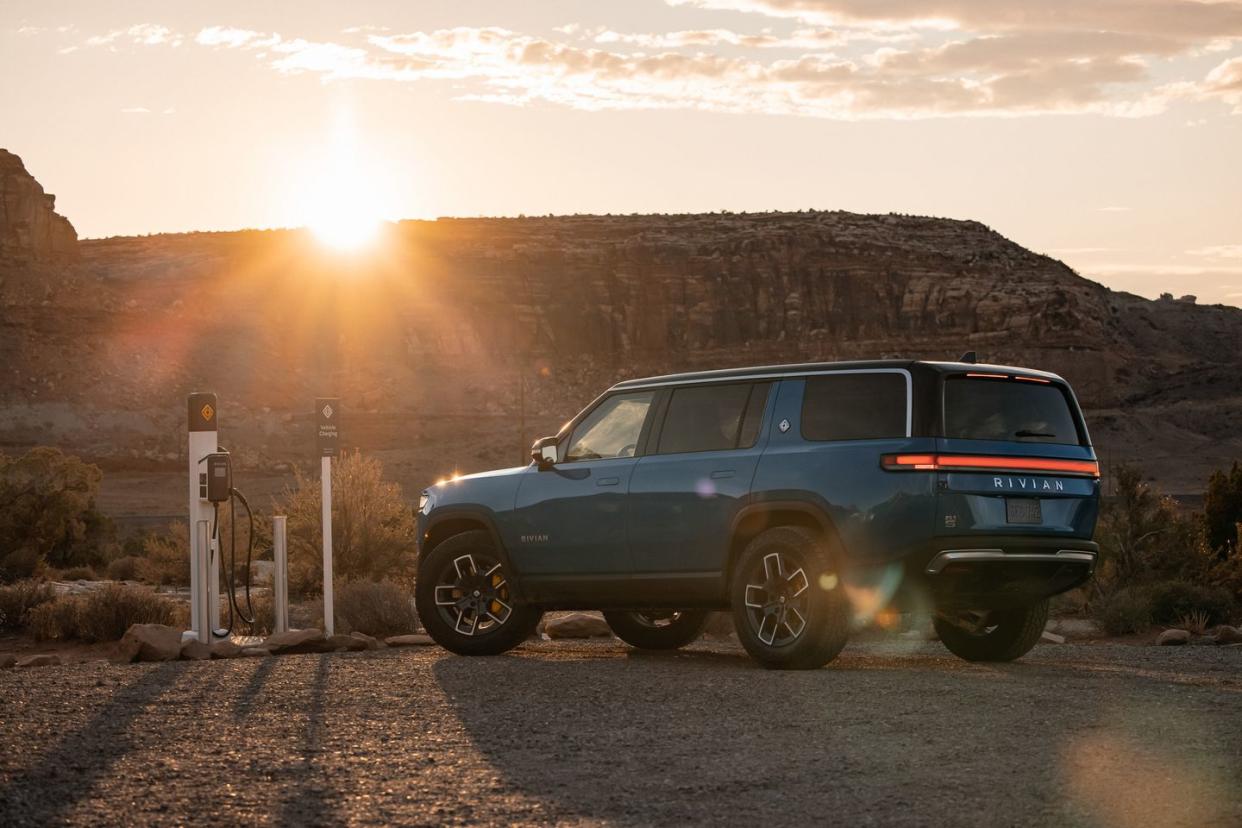
The Bottom Line
Inside any new EV lives a very large and expensive battery that represents a significant portion of the car’s value. But thanks to the industry consensus on EV battery warranties and the basic science of battery preservation, for most people, battery life is a reason to buy EVs, not avoid them.
With a little care, EV owners can generally expect batteries to keep their EV running for many years—and to potentially find a fate other than the scrapyard when they finally stop.
You Might Also Like
